Catalog
Search
134 products
View:
- Selected: 1Areas of use
- Selected: 0Item names
- Selected: 0Manufacturer
- Selected: 0Made in
- Selected: 0Additional
View:
134 products
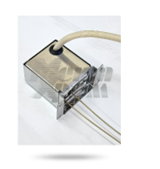
METANATOR
To analyze small concentrations of carbon monoxide (CO) and carbon dioxide (CO2), instead of the usual catarometer for these gases, a more sensitive PID is used, while carbon oxides are converted into methane (CH4) using reaction chromatography. The device implementing the conversion reaction is called a methanator, i.e. a device with a special catalyst that converts CO, CO2 into methane in a hydrogen current, while the latter is either a carrier gas itself, or is blown together with the carrier gas into the methanator through a tee. The methanator provides a highly efficient conversion reaction, while the detection limit of carbon oxides reaches 0.1 ppm.
technical specifications
Metanation temperature — 330 °C
The coefficient of metanation is not less than 95 %
The effective volume of the methanator is 1 ml.
NPF "META-KHROM"
Yoshkar-Ola
Produced in: Yoshkar-Ola, Mari El
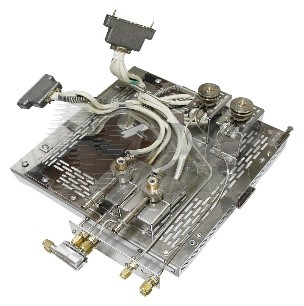
Flame Ionization (PID) for chromatograph
The most common, universal detector that is suitable for the analysis of a wide range of organic compounds. The sensitivity depends mainly on the number of carbon atoms. In combination with a methanator, it allows the analysis of carbon oxides at the level of 0.1 Rt. The level of fluctuation noise is up to 50 MV, the maximum signal is up to 2500 V.
Technical characteristic:
1.2*10712 gs/s for hydrocarbons
NPF "META-KHROM"
Yoshkar-Ola
Produced in: Yoshkar-Ola, Mari El

CRYOCONCENTRATION DEVICES
To determine small concentrations of substances, in some cases it is impossible to do without their concentration in special traps. An example of the need for such concentration is the determination of impurities in permanent gases (Ne, He, H2, Ar, O2, N2, Kr, Xe), the concentration of impurities is less than 1 ppm. Considering that these impurities can be not only hydrocarbons, but also permanent gases themselves, the use of direct detection of impurities by a catarometer is impossible. It is also not always possible to use highly sensitive but expensive detectors (GID, EDD, etc.).
TECHNICAL CHARACTERISTICS
The volume of the trap is 5 ml.
The volume of the Dewar vessel (serial metal thermos) is 1200 ml.
The concentration temperature range is from minus 88.6 (ethane) to minus 269 °C (helium).
The ability to calibrate the chromatograph from the cylinder without disturbing the gas circuit.
The possibility, simultaneously with concentration, to purify the gas intended for purging the trap from impurities (in a similar trap).
Overall dimensions, no more than — 290 ×470 × 615 mm.
Weight, not more than — 8 kg.
NPF "META-KHROM"
Yoshkar-Ola
Produced in: Yoshkar-Ola, Mari El
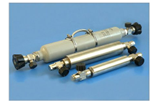
GAS SAMPLER
They are used for sampling natural and liquefied gas. In the company "Meta-chrome" you can buy the following gas samplers:
PGO-50M;
PGO-400;
BDP 12-2-9,8 (aluminum, subcompact);
PU.
The PGO-50 M, PGO-400 and PU models are used to take samples of liquefied hydrocarbon gases that are affected by the overpressure of stationary tanks and or their own vapors. Sampling is carried out according to GOST 14921-78.
The BTP 12-2-9.8 device is used for sampling, storing and transporting samples of gases that are under pressure. The device is made of aluminum and is designed for a small liter. Sampling is carried out according to GOST 31370-2008.
INDICATOR BDP7 BDP7 BDP12 BDP12 BDP16 PGO-400 PGO-50M
Volume, l. 0,7 1 2 4 10 0,4 0,05
Outer diameter, mm 70 70 120 120 160 50 35
Length, mm 360 480 368 593 800 400 325
Working pressure, MPa 9.8 5.0 9.0
The number of refills up to the operating pressure, times at least 5000
Case material AMg6M 12X18
NPF "META-KHROM"
Yoshkar-Ola
Produced in: Yoshkar-Ola, Mari El
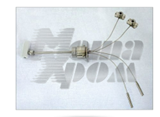
REVERSE PURGE VALVE
The reverse purge valve is a 4-way valve designed to change the direction of the flow of the eluent through the nozzle column and blow off heavy components from the beginning of the column in the opposite direction into the detector. The crane is attached to the bottom panel (bottom) of the module, while taking the temperature of the column thermostat. The two upper fittings (see Fig.) are used to connect the column, the other two are connected to the evaporator and the detector.
NPF "META-KHROM"
Yoshkar-Ola
Produced in: Yoshkar-Ola, Mari El
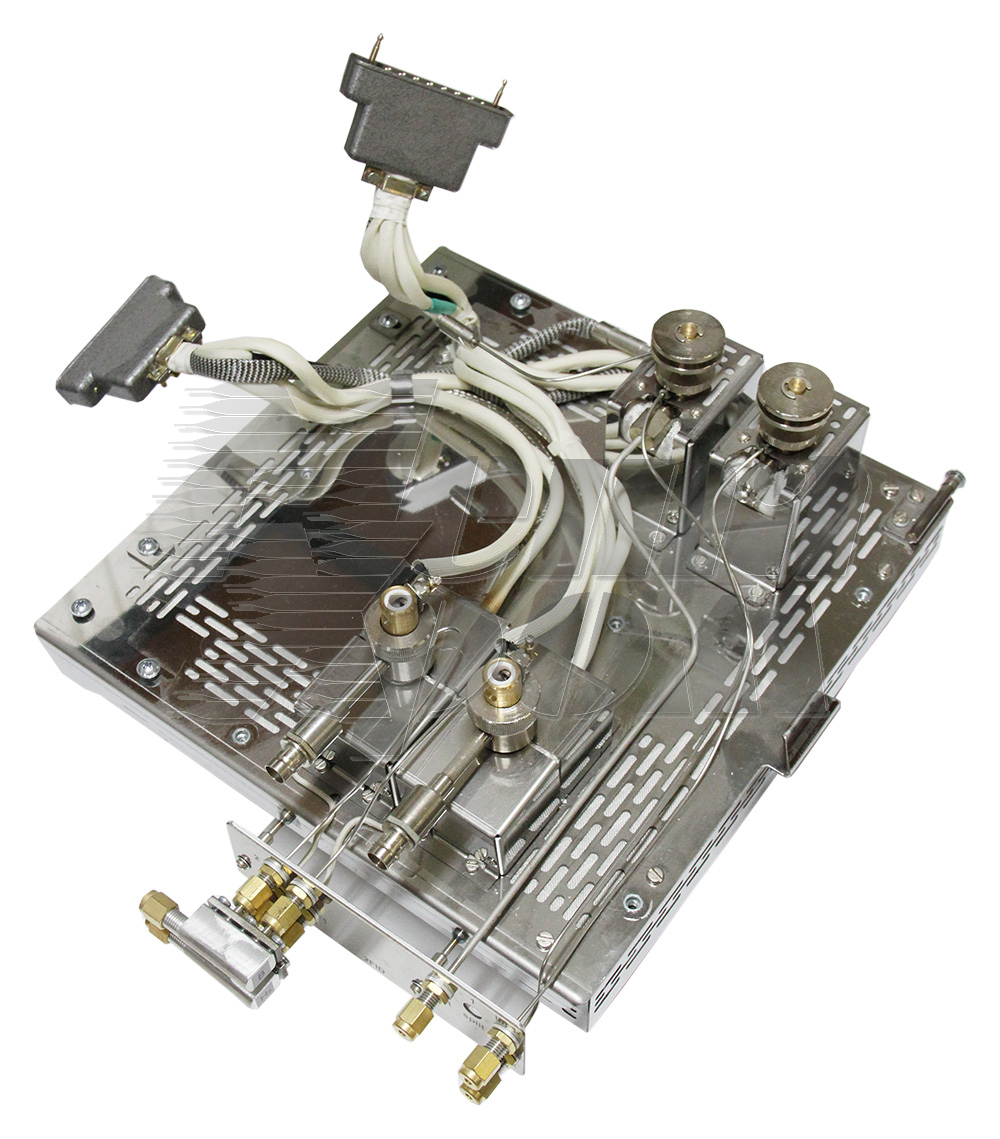
Photoionization (PID)
Partially universal detector. It is used for the analysis of most
organic compounds, including aromatic and aliphatic (except methane) hydrocarbons, heterocyclic compounds, phenols, phthalates, pesticides, amines, ketones, aldehydes, esters, mercaptans. It does not register compounds whose ionization threshold is higher than 10.2 eV (for example, acetonitrile, methanol).
Technical characteristic:
5.0*10`13 g/s for benzene
NPF "META-KHROM"
Yoshkar-Ola
Produced in: Yoshkar-Ola, Mari El
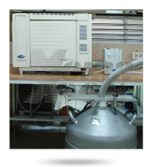
CRYOSTATING DEVICES
The separation of some substances (the classic case is the separation of oxygen and argon) requires negative temperatures of the thermostat of chromatographic columns.
technical specifications
The lower temperature limit of the thermostat of columns with a cooling device based on an air conditioner is minus 5 °C.
The error in maintaining the temperature of the thermostat of columns with a cooling device based on an air conditioner is + 0.05 °C.
The power consumption of the cooling device based on an air conditioner, no more than — 640 VA.
Overall dimensions of the cooling device based on the air conditioner, (width × depth × height), no more than — 620×480× 410 mm.
The weight of the cooling device based on the air conditioner, no more than 32 kg.
The lower limit of the temperature of the thermostat of columns with a liquid nitrogen cryoclap is minus 100 °C.
The error of maintaining the temperature of the thermostat of columns with a liquid nitrogen cryoclave (in the temperature range less than 25 °C) + 0.1 °C.
The power consumption of a cooling device with a liquid nitrogen cryoclave, no more than — 10 VA.
Consumption of liquid nitrogen, not more than 0.1 l/h.
NPF "META-KHROM"
Yoshkar-Ola
Produced in: Yoshkar-Ola, Mari El
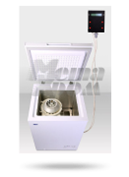
CRYOEXTRACTOR EVC-2
The device is designed to extract target organic substances from liquid and solid samples. Implements the latest method of sample preparation in chemical analysis - extraction freezing with centrifugation of EVCB (Patents of the Russian Federation RU2303476/2007, RU2564999/2015, Patent of the Kyrgyz Republic KG388/2020, International Application PCT/RU2015/000615). Scope of application - hydrochemistry, chemical and toxicological analysis, biochemistry, food research, etc.
technical specifications
The temperature range of extraction freezing with centrifugation is from -(minus) 28 to +25 °C.
Rotor speed with the possibility of programming the mode 100-8000 rpm
Separation factor up to 6600 g
Cryoextractor power supply from AC 220 V, 50 Hz
Power consumption, not more than 0.3 kW
The mass of the cryoextractor is not more than 50 kg
Overall dimensions (HxWxD), mmxmmxmm no more than 900x600x600
Number of simultaneously extracted samples (individually on request)
NPF "META-KHROM"
Yoshkar-Ola
Produced in: Yoshkar-Ola, Mari El
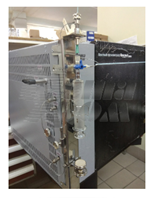
SYRINGE FILLING DEVICE
When analyzing gases dissolved in transformer oil using the ARP method (equilibrium vapor analysis), it is necessary to first fill a syringe with transformer oil with a carrier gas, and then, after achieving an equilibrium distribution of gases dissolved in oil between the liquid and gas phases, introduce the gas phase into the chromatograph (blow out the doses of the chromatograph dispenser tap). Moreover, the operations of filling the syringe and entering the sample are performed without air access. When filling the syringe, it is possible to fix the syringe stem at a certain volume.
technical specifications
The volume of syringes is 20 or 50 ml.
The pressure at the outlet of the syringe filling line with argon is 0.5 atm.
The range of ratios of volumes of the gas phase and oil (Vg/Vm) is from 0 to 1.5.
NPF "META-KHROM"
Yoshkar-Ola
Produced in: Yoshkar-Ola, Mari El
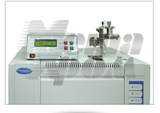
PYROLYZER
The pyrolytic gas chromatography method is widely used in the study of polymer materials, plastics, rubbers, rubbers, paints and other high-molecular compounds of natural and artificial origin. The method is based on thermal decomposition of sample samples in an inert medium (without oxygen access), followed by chromatographic separation and analysis of the formed volatile compounds. Thus, the resulting pyrogram allows us to judge the composition of the original sample. Pyrolysis is also used in geochemical studies.
Technical specifications
The volume of the capsule is 56 ml.
Pyrolysis temperature — from 200 to 1000 °C.
The error of maintaining the temperature is not more than 1.0 ° C.
The heating time of the sample to the pyrolysis temperature is no more than 2 seconds.
The cooling time of the capsule when moving from the hot zone to the cold zone after pyrolysis is no more than 10 seconds.
The time of continuous operation in the pyrolysis mode is no more than 60 seconds.
Electric power supply from the AC network with voltage (220index) V, frequency (50 ± 1) Hz.
Power consumption — no more than 100 VA.
Overall dimensions of the control unit (width ×depth×height) — 210×190×100 mm.
Overall dimensions of the input node (width× depth×height) — 90×135×160 mm.
The weight of the control unit is not more than 2.5 kg.
The weight of the input node is not more than 0.9 kg.
NPF "META-KHROM"
Yoshkar-Ola
Produced in: Yoshkar-Ola, Mari El
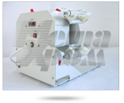
THE DEVICE FOR ACHIEVING BALANCE
When analyzing gases dissolved in transformer oil using the ARP method (equilibrium vapor analysis), mixing of the contents of the syringe with oil is used to accelerate the extraction of gases (to achieve an equilibrium distribution of gases dissolved in oil between the liquid and gas phases). For this purpose, as well as automation of the mixing process, a special autonomous device for achieving equilibrium is produced.
technical specifications
The rotation speed of the syringe drum is 30 rpm./min.
The rotation time (determined by the internal timer, after pressing the "Start" button) is 10 minutes.
The number of syringes placed is 4.
The volume of syringes is 20 or 50 ml.
Power consumption, no more than — 14 VA.
Overall dimensions, no more than 210×280×270 mm.
Weight, not more than — 5 kg.
NPF "META-KHROM"
Yoshkar-Ola
Produced in: Yoshkar-Ola, Mari El
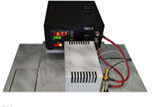
THERMAL DESORBER TDS-3
The TDS-3 includes a heating column with a sorption tube, which is installed on the evaporator of the chromatograph and a control unit located on a special bracket on the right side panel of the chromatograph
Technical characteristics of TDS-3
Desorption temperature (column heating), 0C to 400
Heating speed, 0C/min at least 500
The cooling time when moving to a cold zone is no more than 10 seconds.
Cooling time from 300 0C to 50 0C, min. no more than 10
Continuous operation mode
Power consumption, W not more than 250
Dimensions of the sorption tube, (Ø, length), mm.
Material glass, stainless steel 5/110, 5/114, 6/115, 6.35/89
Electric power supply from 187 to 242 V, 50 Hz.
The display of the measured temperature and the setting of the temperature on the display is
The discreteness of setting the desorption temperature, 0C 0.1
NPF "META-KHROM"
Yoshkar-Ola
Produced in: Yoshkar-Ola, Mari El
